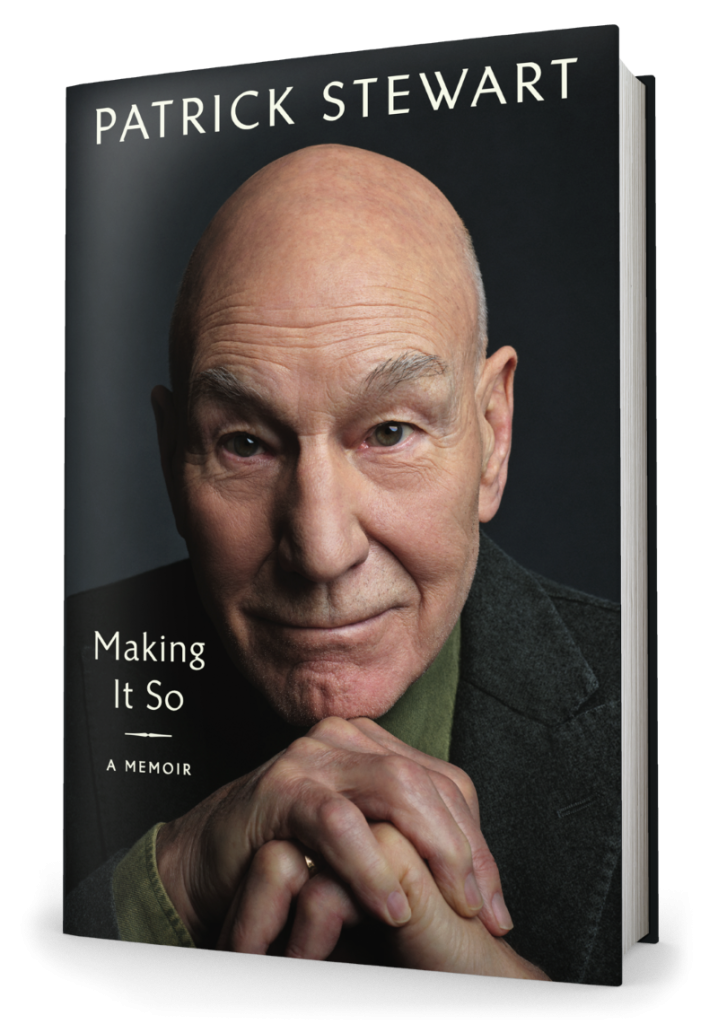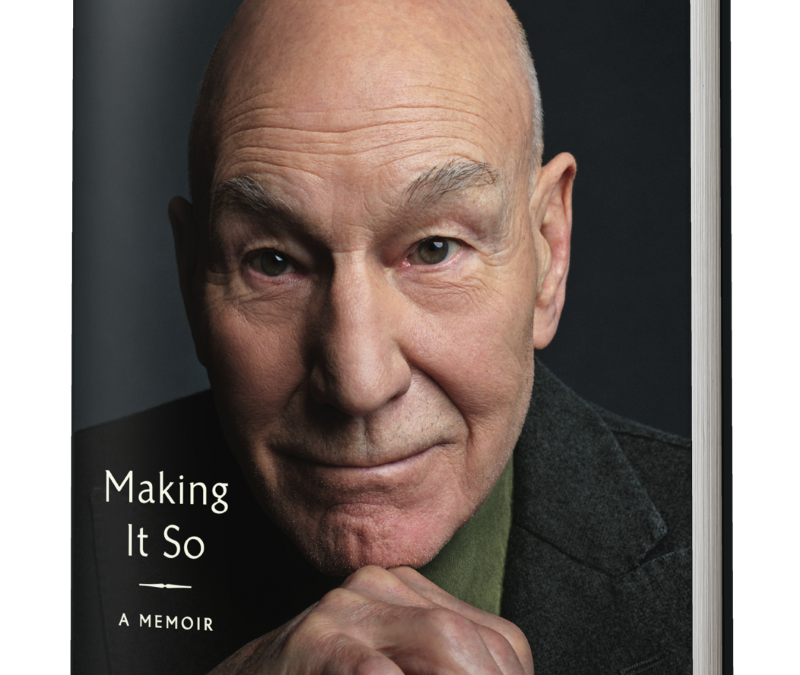
Before reading and planning to comment upon the recently published memoir of Sir Patrick Stewart—Making It So: A Memoir (October 2023)—I anticipated spending time reminiscing about Star Trek. For me, I was drawn to this one because Stewart played the now-iconic role of Captain Jean-Luc Picard of the 24th century starship USS Enterprise (NC-1701-DD) in Star Trek: The Next Generation, or STNG, as it is known to fans. And I love Star Trek.
Like tens of millions of other Americans, I eagerly awaited the television series premier of STNG, which aired on September 28, 1987. The question of the moment was whether STNG could live up to the pop culture phenomenon of Star Trek—now referred to as TOS, or The Original Series—which ran for three seasons, from 1966-1969.
The answer is that STNG lasted seven seasons, including 178 hour-long episodes (with commercials) and spawned four feature length motion pictures. Today, STNG stands out among the 11 spin-off series following TOS; including an animated series featuring many of the same characters of TOS, Deep Space Nine, Voyager, Enterprise, and more.
In a diverse cast of fascinating characters in this vast Star Trek Universe, Picard stands out as one of the most beloved. Indeed, the most recent spin-off is Star Trek: Picard, airing/streaming 33 years after we first heard the name. It is remarkable then, that aside from a handful of references to Picard and STNG, it is not until we are three hundred pages into Stewart’s memoir before he tells the story of how it all came to be.
It is unsurprising that Patrick Stewart played a number of film roles in the two decades of his career before Picard, and that other more significant roles followed STNG. If you asked Stewart, however, to describe his life’s work, he would most assuredly claim the mantle of Shakespearean actor of the Royal Shakespeare Company (RSC), which is one of the premier theater companies in the world.
Stewart has a marvelous time sharing stories that form his personal path from Hamlet and Richard III to captain of a starship; all with magnificent humility, self-astonishment and humor.
The most fascinating aspect of all this, though, is that Stewart’s early life does not portend such success. Chapter One places Stewart in the most humble of circumstances, with no preface or prologue announcing, or even suggesting, the extraordinary life which would follow. In this working class environment in Northern England in the wake of the devastation of World War II, a young Pat Stewart, who demonstrated no measurable academic talent and had little patience for schooling, seemed destined to land in the kind of work that required only a strong back and a willingness to sweat.
If we were to look for signs, though, that much more was in store, it would be this: Underneath a bed he shared with his brother was a chamber pot known as a “gazunder” for peeing at night, while more serious business meant a trip outside; a cherished opportunity in a family starved for privacy. “The Stewart family toilet served a separate function for me as my reading room…” Stewart writes, “I spent hours in that toilet. In the depths of winter, I would wear an overcoat and a wooly hat. There was no lighting outside so I took a candle with me, which provided illumination and warmth to my fingertips… And I read and read…”
In the small town of Mirfield, the local library permitted only two books at a time which meant frequent Saturday visits. It was here, he adds, that “the library’s selection of American literature became my obsession. Hemingway, Fitzgerald, Steinbeck, Raymond Chandler’s Philip Marlowe detective novels—I read them all.” So, while William Shakespeare was certainly the vehicle for Stewart’s stardom, the true catalyst—taking Stewart from the outhouse to outer space—was books. “It was then and there, at the local library,” he proclaims, “that my love of storytelling began.”
To love storytelling is to learn how to dream; but not without the help of a few others who recognized that Patrick had skills and passions for other things beyond his station. Stewart recalls these inspirational adults with great affection and a degree of humility that demonstrates, had any one of them not played the role they had, his life would have most certainly been quite different.
For those who love Star Trek as I do, this is an absolutely delightful take on the origins of Captain Picard. I am not a devout fan of the theater—although, frankly, I haven’t really given it a try—but I imagine those of you who are will delight in the manner in which Shakespeare’s take on humanity so closely resembles the questions and issues addressed in just about every episode of STNG. This includes Season One, Episode One, where an omniscient being calling himself Q literally and figuratively puts humanity on trial. And the stakes are existential… so thank goodness that it is the example of Captain Jean-Luc Picard by which our species is measured. It is no spoiler to say that we survived to live another day.
While the darker side of human nature is often explored, STNG primarily offers a message of hope, especially in regards to the many things that artificially divide us. As Stewart writes, Star Trek “presents an aspirational future preferable to our present—a future where inclusivity is a given rather than an effort.”
When Stewart was offered the role of Captain Picard, he knew almost nothing of the socio-cultural impact of Star Trek: The Original Series—whose commentary in the late 1960s tells us much about that time. “It is extraordinary,” Stewart reflects, “the reach of Star Trek. If I entered into its universe a stranger to its customs, I neared the end of my time on The Next Generation recognizing that I was a custodian of something held dear by millions of people, probably hundreds of millions.”
If you have had your interest piqued and are not familiar with STNG, I strongly suggest sticking to the chronology. I cannot say how standalone episodes may play out because I initially watched each and every one of these when it first aired or on a VCR (or Video Cassette Recorder for my younger readers). Regardless, the storylines and character development should be viewed as they were produced.
Stewart reflects on only a few specific episodes of STNG so I was pleased to see that his favorite is my favorite. So insightful is this one, I’ll say nothing save, if you have any inclination whatsoever to watch a single episode of this magnificent example of wonderful storytelling, watch “The Inner Light.” You’ll cry.
There is so much more to Patrick Stewart’s memoir beyond the Star Trek portal through which I traveled; perhaps a love of the theater, or empathy for a rags to riches story, or just an interest in humble and earnest storytelling of the finest order. Either way you get there, I assure you will not be disappointed because the entire trajectory of Patrick Stewart’s life weaves a rich tapestry of the human experience.












